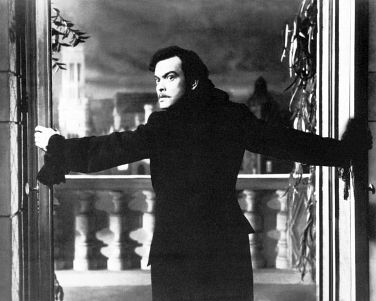 Submitted by Mystic Marlo on
Submitted by Mystic Marlo on

Actor Orson Welles As Cagliostro
I have always been fascinated with the life of Giuseppe Basalmo better known as the Count Cagliostro. Cagliostro is considered one of the greatest figures of occult history, although, since the 19th century many consider him to have been a charlatan. Wild stories have always circulated around him obscuring the true fact s of his life. Here is a brief post regarding the great magician.
Among the Magi, the Zurich pastor Johann Kaspar Lavater was foremost as a promoter of tolerance. This modest author of a famous work on physiognomy had his own views on religion. He observed his fellow men with deep insight, for his physiognomic art was the study of man’s features as the signs and characters formed by nature to reveal inner man. His urbanity often proved more effective the tempestuousness of his fellow magicians.
One would think such a learned and influential man would not need advice from a fellow magus. Yet in 1780, Lavater traveled to Strassburg where he hoped to gather more wisdom from the Count Calgiostro. The Count, however, refused to see him. They exchanged letters. To Laveter’s question, “In what precisely does your knowledge reside,” Cagliostro answered laconically: “In verbis, herbis et lapidibus, “ (in words, herbs and stones), thus alluding to his marvelous cures.
He performed these cures with simples concocted from minerals and vegetables and with the suggestive power of his word. Such an answer was unusually modest, as the “count” made little secret of his knowledge. Cagliostro was less talkative in referring to his stay in London where he committed several frauds.
In spite of Cagliostro’s shady past, even his enemies could not deny the magician’s astounding intelligence. And many friends and followers acknowledged their master’s scandals and lies as extravagances against his wisdom, his chastity, his charity and truly superhuman talents of seer, healer and Hermetic.
Cagliostro always seemed to be "on the run" for one reason or another. He travelled throughout the world visiting Egypt, Rhodes, Greece, Persia, India and Ethiopia studying any occult and alchemical knowledge he found in those countries. In 1768 he returned to Italt settling in Rome and marrying Lorenza Feliciani known as "Serafina.' The couple stayed in Rome until members of the Inquisition began to suspect Cagliostro of heresy. They fled to Spain for a few yearseventually returning to Palermo where shortly thereafer Cagliostro was arrested but saved by a nobleman. After cheating an alchemist out of 100,000 crowns, the couple fled to England in the 1760s where he claimed to possess an "alchemical secret.'
Cagliostro was the founder of the Egyptian Rite Masonic Lodges in England, Germany, Russia and France. While in London it has been said that he met and was initiated by Comte de Saint Germain into the Rites of Freemasonry. The power of his word attracted numerous adherents and whole groups of Freemasons abandoned their rites to follow those invented by the Grand Kophta, as Cagliostro called himself. Brothers of every creed were accepted. The only postulate was to believe in the immortality of the soul.
King Louis the XVI of France had an avid interest in Cagliostro who entertained the King with magical suppers. During séances, magical ceremonies were performed with the intention of communicating with seven “pure spirits.” An innocent girl, the “Dove” was led to a table where a glass bottle was flanked by two torches. The girl would stare into the bottle in which absent persons, future happenings, or angels would appear. She was often led behind a screen where she would experience a mystical union with an angel.
Cagliostro was a favorite of the French Court until 1785. Due to his involvement with historically Affair of the Necklace which instigated the French revolution in 1789, he was arrested and spent six months in the Bastille. When his sentence was completed he was forever banished from France.
Once again Cagliostro and his wife returned to Rome where he attempted to establish a Masonic Lodge. He was promptly arrested and tried for heresy, magic, conjuring and Freemasonry. He was sentenced to death by the Inquisition but the Pope changed the sentence to life imprisonment. Cagliostro died on August 26, 1795 while imprisoned in the castle of San Leo in Montefeltro. Reports of his death were not believed until Napoleon commissioned a report of his death.
- 1577 reads